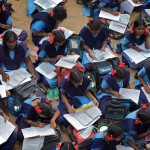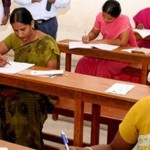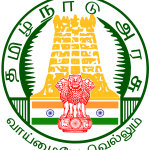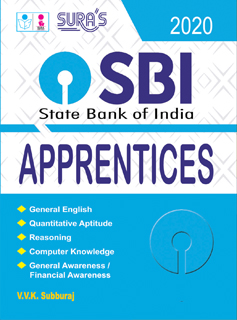1. The inscription provides a detailed account of Samudragupta’s reign
A) Mehrauli inscription
B) Allahabad pillar inscription
C) Aihole inscription
D) Uthiramerur inscription
Explanation : Ans : (B)
Samudragupta : Chandragupta-I was succeeded by his son Samudragupta, who became the ruler after subduing his rival Kacha. The Allahabad pillar inscription, written by Harisena gives a detailed account of the conquests of his master. This list can be divided into four categories like Dakshinapatha, Aryavarta, forest States and Shahanusas.
Foreign Rulers like the later Kushanas and Sakas remained independent but their independence had to be approved by Samudragupta. Virasena was the Commander of Samudragupta during his Southern Campaign. Samudragupta performed the Ashwamedha Yajna and struck Gold coins of Yupa type. He granted permission to the Buddhist King of Ceylon Meghavarman to build a Monastry at Buddha Gaya. Hence he was called Anukampavan (full of compassion). He was a great patron of art and adopted the title of Kaviraja. Harisena and Vasubandhu adorned his Court. On some gold coins, he is shown playing the Veena. V.A. Smith calls Samudragupta the ‘Napoleon of India’.
His Conquests :
According to Allahabad Parashasti, he conquered northern India twice.
Samudra Gupta conquered Attwiks and compelled them to enter his service. They helped him in his Deccan expeditions.
He conquered south India. He defeated 12 kings and charged annual tax from them. He did not annexed their kingdoms.
He conquered frontier kings. They were Samtat, Davak, Kamrupa, Nepal and Kartripur.
He conquered republic states. The 9 republic states accepted his authority without fighting. They were Malv, Arjunayan, Yodheya, Madrak, Abhir, Prarjun, Kak, Sankanik and Kharpatic.
2. Universal Primary Education aimed at achievement of education for all class covering
A) VI – X B) I – V
C) XI – XII D) VI – XII
Explanation : Ans : (B)
Primary education : The
Primary education in India is divided into two parts, namely Lower Primary
(Class I-V) and Upper Primary (Middle school, Class VI-VIII). The Indian
government lays emphasis on primary education
(Class I-VIII) also referred to as elementary education, to children aged 6 to
14 years old.
Education has also been made free for children for 6 to 14 years of age or up to class VIII under the Right of Children to Free and Compulsory Education Act 2009.
3. In India plan holiday was implemented after ………. five year plan.
A) Second five year plan
B) Third five year plan
C) Fourth five year plan
D) Sixth five year plan
Explanation : Ans : (B)
In India Plan holiday was implemented after Third five year.
The duration of Plan Holiday was from 1966 to 1969.
The main reason behind the plan holiday was the Indo-Pakistan war and failure of third five year plan.
During this plan annual plans were made and equal priority was given to agriculture its allied sectors and the industry sector.
4. Visible light of solar radiation supplies the main energy for photosynthesis point out the wavelength of visible spectrum
A) 400 nm to 700 nm
B) 720 nm to 820 nm
C) 280 nm to 300 nm
D) 1100 nm to 1900 nm
Explanation : Ans : (A)
Both quality and intensity of light influence photosynthesis. Light between the wavelength of 400nm to 700nm is most effective for photosynthesis and this light is called photosynthetically active radiation. As the intensity of light increases the rate of photosynthesis increases. However, if the light intensifies, the rate of photosynthesis decreases. This is because of higher intensity of light destruction of chlorophyll occurs.
5. How many Member countries are In ASEAN ?
A) 8 B) 10
C) 12 D) 14
Explanation : Ans : (B)
Members of ASEAN countries are 10.
1. Brunei 2. Cambodia
3. Indonesia 4. Laos
5. Malaysia 6. Myanmar
7. Philippines 8. Singapore
9. Thailand 10. Vietnam
Observer status has been accorded to
1. Papua New Guinea
2. Timor Leste
Its secretariat is at Jakarta and 10 official languages are recognised including Tamil – an Indian language.
It was formed in 1967 by five countries namely Indonesia, Malaysia, the Philippines, Singapore and Thailand under ASEAN or Bangkok declaration. Today the membership has extended to include a total of 10 members-along with 5 above members- Cambodia, Brunei, Laos, Myanmar and Vietnam are other five.
It was formed with the objective of accelerating the development and progress of the region by promoting cooperation among the member nations.
The members have achieved strong regional integration through initiatives like ASEAN Free Trade Agreement (AFTA), the ASEAN Framework Agreement on Services (AFAS) and the ASEAN Investment Area (AIA) etc.
ASEAN-India Commemorative Summit was held in New Delhi to celebrate the 25th anniversary of the establishment of sectoral dialogue between two sides under the theme of “Shared Values, Common Destiny”. It issued joint statement titled Delhi Declaration after the plenary session. The session also assumes importance as for the first time there was explicit mention of close cooperation to handle “cross-border movement of terrorists”.






